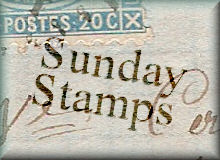An entry to
Sepia Saturday. "Using old images as prompts for new reflections"
The crowed dockside on this week's Sepia Saturday photo prompt of the arrival in New York of the trans-Atlantic liner SS Imperator put me in mind of another liner
which crossed the Atlantic, RMS Empress of Ireland. This one was carrying two of my Grandmother's sisters emigrating to Canada. What the date was, I do not know
because the stamps on the post card sent by my Great Aunt Lucy have been torn off, for I would guess one of my Grandmother's many grandchildren. Eek.
Lucy writes "My Dear Winnie, Well we are now on the train bound for Winnipeg, left the boat last night. (unknown initials) - got straight into the train. I am still with Mrs Armistead, we are all now hear together writing post cards, we had a grand time this morning all of us together 8 of us. Hope you got my letters safe and hope to hear from you soon" Now hear comes a puzzling bit which if I read it right says "burn those two in my drawer upstairs", Goodness I wonder what was in those incendiary letters, but after dropping that intriguing request into the card she continues "remember me to all. I felt disappointed not seeing Harry. (unknown initials) was spooning on the boat, there was some done I tell you..." Now no tale telling Lucy.
My father always used to say of my Grandmother that she could fit more news in a one page letter than most people in three. It seems that Lucy had the same gene if this post card is anything to go by.
I wonder if that group of 8 mentioned by Lucy were on this postcard picture of emigrants on the deck of the Empress of Ireland in July 1911. The Empress of Ireland was one of two ships built by the Canadian Pacific Line's immigrant trade from Liverpool to Canada, the other was the Empress of Britain which I think appears in the distance of the first postcard painting. The two Empresses provided weekly services, starting in 1906. to carry the waves of people crossing the Atlantic.
Happily Lucy arrived in Quebec and boarded the train for her next adventure. For the passengers and crew sleeping in the early hours of the morning of 29 May 1914 it was not a happy journey. As the ship made its way in thick fog in the St Lawrence Seaway it collided with the Norwegian collier the Storsted and sank in less than 15 minutes. 1000 people died within 4 miles of shore.
The disaster is often overshadowed by those of the Titanic and Lusitania and because of that the ship is often known as the forgotten Empress. I wonder what Lucy's thoughts were when she hear about the end of the ship that carried her to her new life.




































